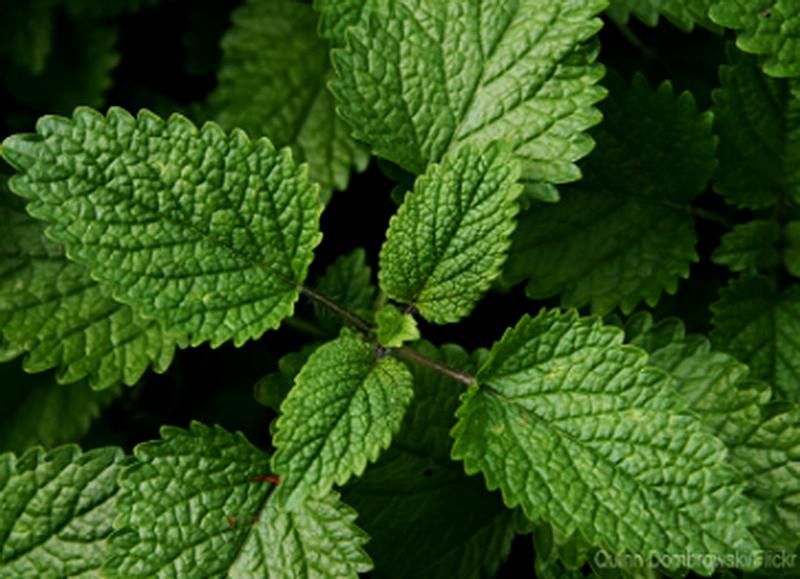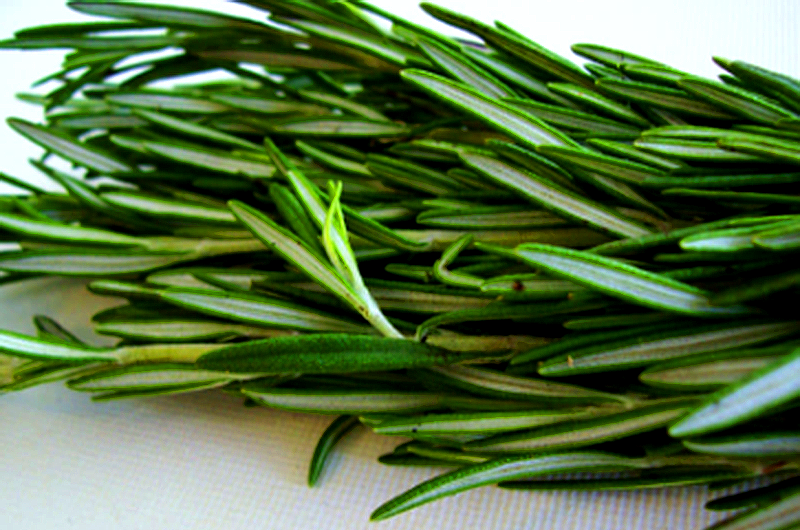
On a recent trip to my local farmers’ market, I spotted bundles of fresh purslane, neatly nestled between a stack of cabbages and a gorgeous display of zinnias and sunflowers. Upon seeing my interest, the owner of Strawberry Creek Farm came out from behind the stand and began enthusiastically describing the benefits of this wild green herb. He gave my husband and I samples to nibble on while we peered at a printout he produced showing its impressive nutrient profile.
In spite of the fact that I knew I probably had a clump or two hiding in my own garden at home, his friendly personality and passion for the plant was contagious enough that I bought a bundle, on the spot.
While basil, cilantro and parsley are easy to find at farmers’ markets, many other herbal gems, including purslane, rarely make a market appearance.
Drawing Interest
The biggest hurdle farmers face in selling lesser-known herbs is educating their customers on their value. They need to know what the herb is good for and how to use it before they’ll even consider buying it. The printout that listed the nutritional benefits of purslane was a selling point for me. Being able to taste the fresh green while reading that information sealed the deal.
Offering samples of ready-made products that incorporate the herb can help pull attention to your table. Different areas have different regulations regarding samples, especially cooked foods, so be sure to find out your market’s rules before proceeding.
Another method to draw interest is to display a variety of eye catching cards that have colorful projects and recipe ideas printed on them.
Using the tutorial on PicMonkey.com, I made a included sample recipe cards to help jumpstart your creative marketing with the herb listings below. Print the pages out on heavy-duty paper or cardstock so they hold up to market conditions.
1. Lemon Balm

Jess, who blogs at The 104 Homestead, successfully sells a variety of fresh herbs at market each week. She finds that customers are a lot more willing to experiment with medicinal herbs and those that can be used in beauty care recipes, but tend to play it safe when it comes to culinary herbs.
One of her best sellers is lemon balm, also called Melissa. To maintain freshness, she sets the herbs in a vase, like a flower arrangement. She instructs customers to store theirs in their refrigerator in a small glass with water until they’re ready to use it.
Use Lemon Balm in:
- Infused oil
- Lip balm
- Hand cream
- Sore-throat spray
- Bug spray
- Sorbet
- Muffins
- Tea
- Infused honey
Printable Recipe Cards: Lemon Balm Popsicles and Lemon Balm Bug Spray
2. Rosemary

Rosemary is a tender perennial, hardy up to zone 8, though it overwinters well when mulched in cooler climates. It makes a flavorful seasoning for meat and potatoes and a great addition to herb breads. A potent antioxidant, its extract is used as a natural preservative in foods and cosmetics.
In traditional folklore, rosemary is reputed to help memory, and modern science [https://www.northumbria.ac.uk/about-us/news-events/news/2013/04/rosemary-aroma-may-help-you-remember-to-do-things-1] backs that up. Just sniffing rosemary might also help reduce levels of the stress hormone cortisol [https://www.ncbi.nlm.nih.gov/pubmed/17291597]
Use Rosemary in:
- Breadsticks
- Scones
- Breads
- Hot oil treatment for hair
- Vinegar hair rinse
- Herbal butter
- Tea
Printable Recipe Cards: Rosemary Salt and Rosemary Grill Brush
3. Thyme

Thyme is a perennial herb with both culinary and medicinal uses. Thymol, a potent bacteria- and fungal-fighting compound found in thyme, is one of the active ingredients in some mouthwashes and natural hand sanitizers.
While you can try selling it in individual bunches, many marketers find thyme moves better when included with other herbs. You can make up packets of mixed fresh herbs that go well with thyme, such as an Italian seasoning blend (thyme, basil, rosemary, oregano, parsley) or poultry seasoning (thyme, sage, marjoram). Browse through your cookbook collection or favorite recipes for more ideas.
Printable Recipe Cards: Four Thieves Vinegar and Thyme Face Toner
4. Dandelion Flowers

This last herb might seem odd to us country folk accustomed to dandelion-covered fields. However, my inbox is flooded with emails each spring from apartment-dwelling blog readers asking where they can purchase unsprayed dandelion flowers so they can make the projects on my website. I’m convinced it’s an untapped niche market.
There are so many fun and practical uses for these cheerful little blooms, including dandelion cupcakes, jelly and salve . Any flowers you don’t sell can be taken home, dried, infused in oil, and turned into soaps, balms and lotion bars. You can find more dandelion recipes and ideas in my free download: “Things to Do With Dandelions.”
Printable Recipe Cards: Dandelion Infused Oil and Dandelion Salve
There are so many more herbs that have the potential to be good sellers at market. Start small, but don’t be afraid to experiment with new products and approaches. Interest in herbals is at an all time high. Now is the time to entice your customer’s interest with unique samples and colorful recipe cards and carve out your own little corner of this market.
Learn more about herbs from HobbyFarms.com:
- 5 Soil Amendments for Better Herbs
- Grow 11 Herbs Indoors
- 8 Healing Uses for Farm-Grown Herbs
- 2 Simple Ways to Preserve Herbs
- 3 Herbs from the Carrot Family to Grow This Year




